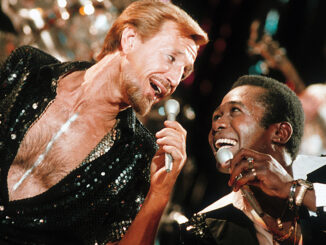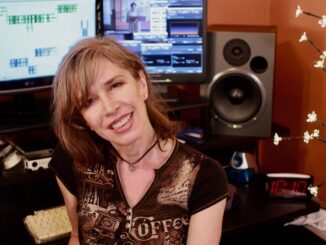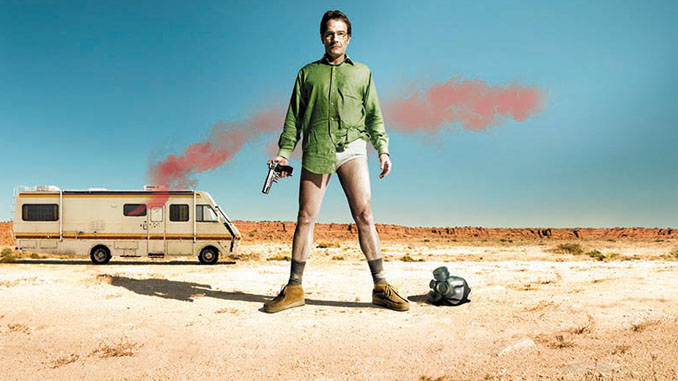
by Peter Tonguette • stills courtesy of AMC
Like most Foley artists, Gregg Barbanell, MPSE, aims for his work to go undetected by audiences. After all, footsteps should sound like they are emanating from the shoes of the actor who appears on screen, not the Foley artist behind-the-scenes, right? “Your work as a Foley artist has to blend in,” Barbanell declares. “All of the work that we do is invisible in that sense.”
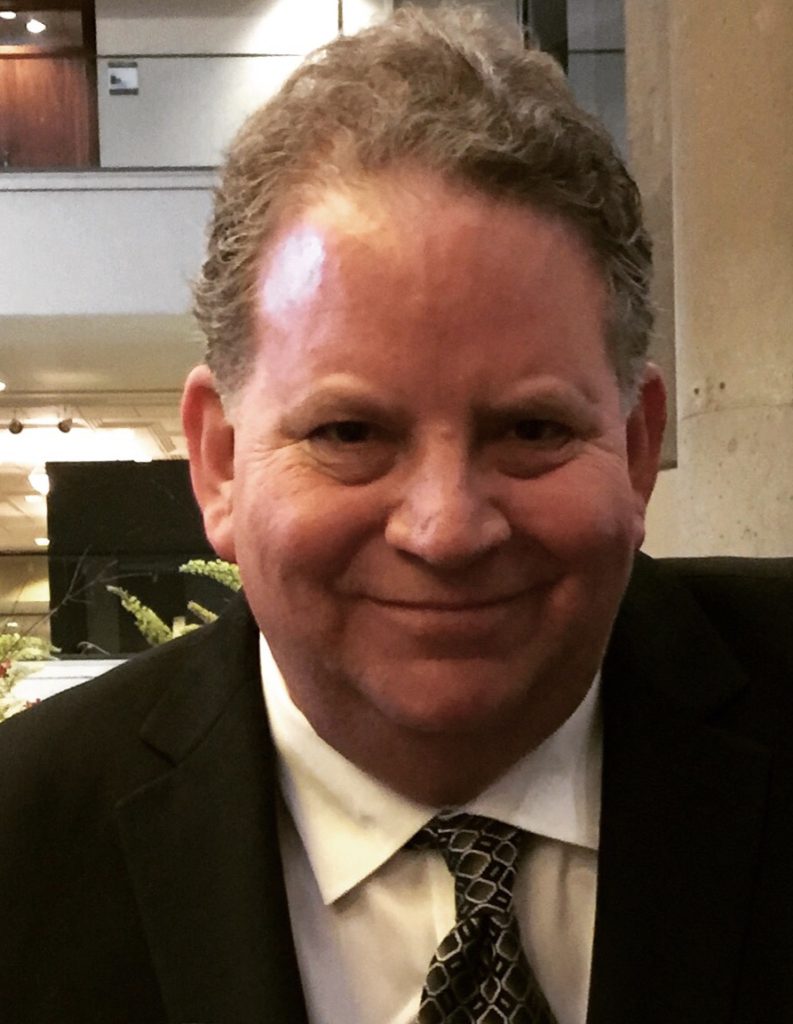
Sometimes, however, the sounds created by Barbanell and his colleagues are meant to stand out. From 2008 to 2013, the Foley artist worked on the AMC TV series Breaking Bad. Created by Vince Gilligan, the series revolves around teacher Walter White (Bryan Cranston), who uses his lung cancer diagnosis as a pretext to enter a riskier, but more lucrative, line of work: drug dealer. The series also featured prominent parts for Aaron Paul (as White’s former student, Jesse Pinkman), Anna Gunn (as White’s wife, Skyler) and Bob Odenkirk (as White’s attorney, Saul Goodman).
The show’s Foley was meant to be expansive, encompassing sounds both loud and intimate. From the beginning, Barbanell realized that his work was not only being retained but featured. “It was motivating,” he recalls. “When I heard how they were using our stuff, that motivated me for the next five years to make sure everything I did on Breaking Bad was as perfect as I could make it. It was a Foley dream job.”
His “dream job” came about three decades into a career that had already encompassed more than 400 jobs in film and television. A native of San Francisco, the future Foley artist entered the School of Theatre at California Institute of the Arts (CalArts) in Santa Clarita. Then, after his freshman year, he petitioned to enter the film school, the dean of which was acclaimed British filmmaker Alexander Mackendrick. “I submitted a script I wrote, and he liked it,” Barbanell recounts. “Not only was I able to get in, but he took me under his wing.”

Mackendrick — whose credits included Sweet Smell of Success (1957) and A High Wind in Jamaica (1965) — hoped that Barbanell had the makings of a great writer, but the student quickly realized his heart wasn’t in writing. “I have tremendous respect for writers, but it takes discipline I do not have,” he concedes. Nonetheless, he adds, “I loved CalArts. I refer to it as the best four years of my life.”
Upon graduation from CalArts, Barbanell entered the film business as an assistant picture editor on Michael Miller’s Jackson County Jail (1976), starring Yvette Mimieux and Tommy Lee Jones, and edited by Caroline Ferriol. Not long after, he found himself working on an independent feature directed by B-movie actor Keith Larsen, Young and Free (1979), which provided him with his first entrée into post-production sound. “I did a little bit of everything,” he explains. “Keith was looking for someone to cut sound effects on a film that was basically shot MOS. I said, ‘Hell, I could do that’ — even though I had never done it.” With his friend from Cal Arts, Ron Horwitz, he rented an editing room (actually a former film vault) at Sunset Gower Studios and began assembling a sound library using material from sound editor Gene Corso at Sunset Editorial.
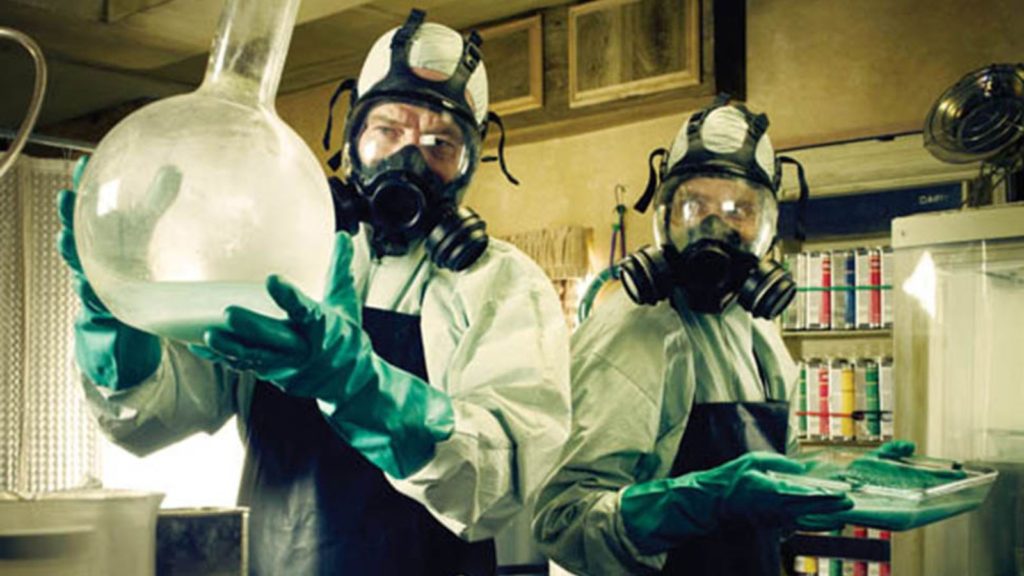
Young and Free was mixed at MGM, where the sound department was so impressed with Barbanell and Horwitz’s work that the pair was invited to join the studio as sound editors. Instead, recognizing how much sound work was then being done off the lot, Barbanell opted to join forces with Horwitz to co-found a sound editorial company, Mag City.
“I became the effects and Foley guy, and Ron cut dialogue and ADR,” recalls Barbanell, whose projects at Mag City included Peter Bogdanovich’s Saint Jack (1979), John Carpenter’s The Fog (1980) and Ivan Passer’s Cutter’s Way (1981). “When I first started doing Foley, we were generally asked to get the feet done, and not necessarily all of them, as well as some props,” he recalls. “During the flourishing of Foley in the ’80s and ’90s, the demands on us became greater and greater to the point where we were eventually asked to do most everything.”
In the mid-1980s, Mag City was sold, but before Barbanell had a chance to plot his next move, he began receiving job offers as a Foley artist — offers that have kept on coming to this day. “While I was trying to figure out what I was going to do next, the phone kept ringing,” he says. “I started building a reputation rather quickly, and fortunately, it’s still a good reputation that I’ve managed to somehow not screw up.”

For years, the Foley artist focused his energies on feature films — including such notable projects as Carpenter’s They Live (1988), Albert Brooks’ Defending Your Life (1991) and Hayao Miyazaki’s Spirited Away (2001) — but he also found himself working consistently on television projects, contributing Foley effects to such series as Columbo (1971-2003), Moonlighting (1985-1989) and Silk Stalkings (1991-1999). “If they called me, I’d do it,” he relates. “To this day, I have a reputation of not saying no.” Today, like many in the industry, most of his work is on projects for the small screen.
The Foley on many TV projects, Barbanell said, is relatively straightforward and done on quick turnarounds — sometimes as little as a single eight-hour session for a one-hour drama. That was not the case on Breaking Bad, which he — then the staff Foley artist at Widget Post — first learned about from sound editor Kurt Nicholas Forshager.
“Out of the blue, I got a call from Nick, who said, ‘Gregg, I have a project I think I want you to do,’” Barbanell remembers. “He said, ‘But it’s really different and unusual, and it’s going to require a lot of you.’” Forshager explained that Foley would be integral to Breaking Bad. “We weren’t going to be running a lot of music,” Barbanell recalls. “It was going to be quiet, intimate and everything would matter — everything. It’s not big, bang, shoot-’em-up, explosions, car chases.” And the team would have the time to seek perfection. “Going into this, Nick told me they wanted two 10-hour days per episode, which equals two-and-a-half days,” the Foley artist continues. “Every single episode we handled like a feature. We would redo this, we would finesse that…”
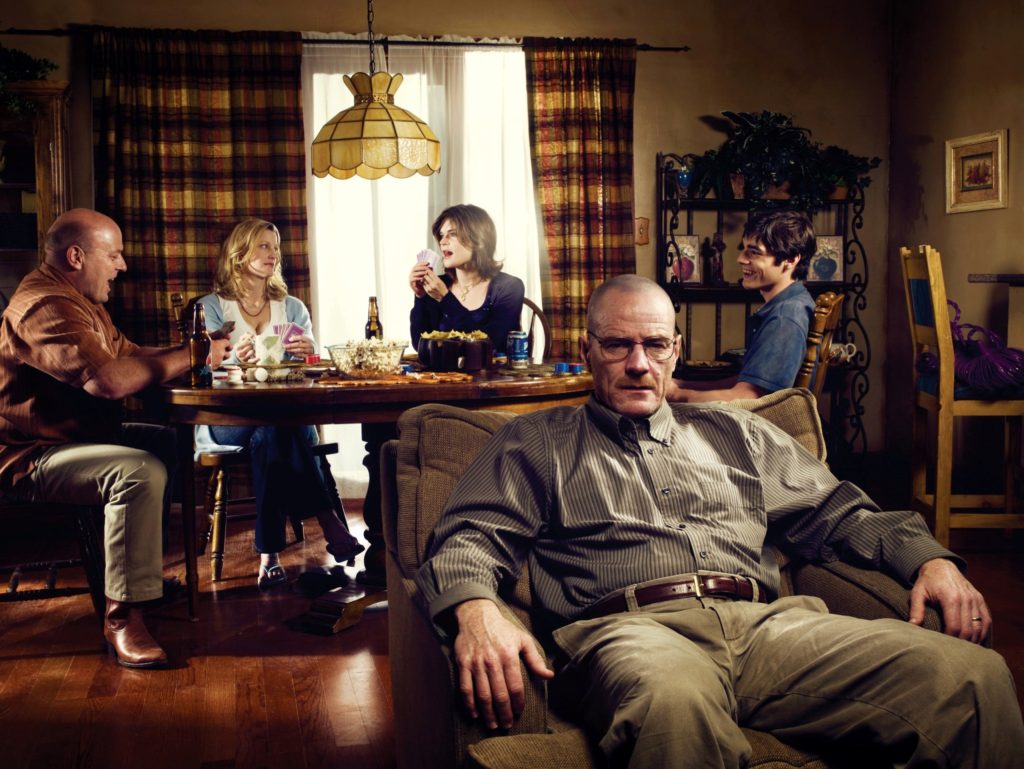
Just how serious were the show’s producers about this approach? A few episodes into the first season of Breaking Bad, Barbanell — who selected Foley artist Dominique Decaudain as his partner for the series — encountered a cue that read as follows: “Stick bug walking.” He explains: “It’s a camera-on-the-ground shot out in the desert. We’re going, ‘What? I don’t see a stick bug. What stick bug?’ Someone said, ‘There. Down. About center. Down low.’ And you can see a stick bug walking across. I’m thinking, ‘There is no way this can be played.’ But we did it.”
To replicate the sound of the stick bug walking in the sand, Barbanell made use of a pair of matchsticks. “I got the mic literally three or four inches from the sand,” he says. “I made it so that it wasn’t too soft, and I very, very delicately did the feet with the matchsticks.” Sure enough, when re-recording mixer Eric Justen showed the episode to the Foley artist, the stick bug sounds remained. “Eric played the scene, and you could hear the stick bug,” Barbanell remembers. “He said, ‘We’re featuring your stuff. Not only are we playing it, we’re relying on it.’”
On seasons three through five, post-production moved from Widget Post to Warner Bros., but Foley artists Barbanell and Decaudain — as well as most of the sound team — remained with the show. “I was able to stay with the show thanks to the producers,” the Foley artist relates. “This goes to Vince Gilligan and the producer, Diane Mercer. They are true to their people, and they’ve served them well.” For each episode, the Foley artists would be sent the picture to preview about a week before work began. “At home, I watched the episode, made notes and gathered props. If there was something I needed, I would go out and get it,” says Barbanell, who in preparation for the fifth season episode “Dead Freight,” had to determine how to bring alive the sounds of a train heist.
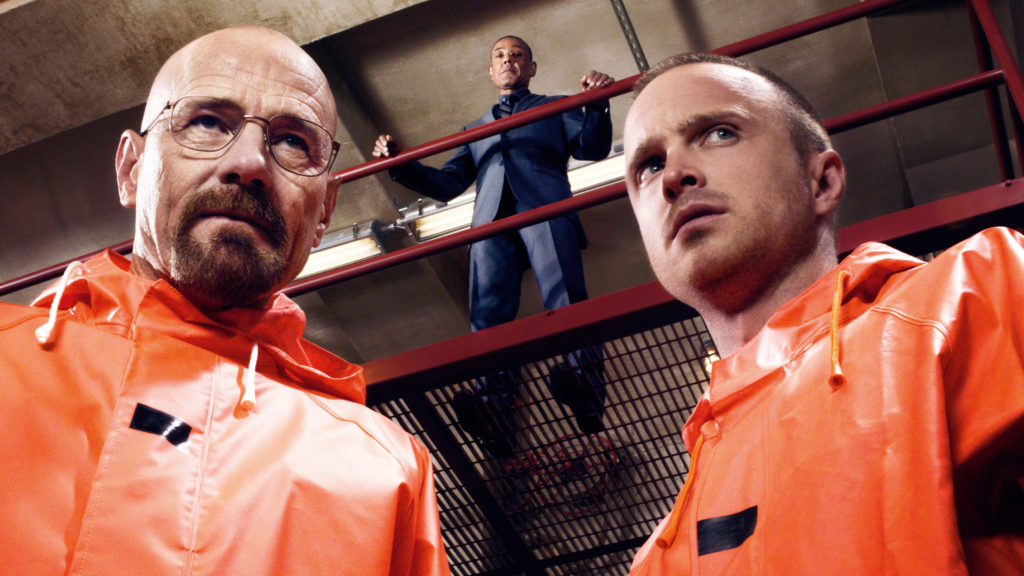
“There was jumping on the train, and the characters were undoing these big, heavy, metal hatches with chains,” recalls the Foley artist, who made a trek to a junkyard where he spent hours combing through potential props. “I pulled out $300 worth of metal props,” he comments. “I loaded up the back of my SUV with all this stuff and took it to the stage.” For this particular episode, Barbanell realized that the time allotted would not be sufficient to complete the Foley. “We didn’t abuse this, but when we needed more time, we always got it.”
Other memorable episodes for the Foley artist include “Live Free or Die,” also from season five, featuring one scene in which White and Pinkman position a huge magnet outside of an evidence room (with the goal of wrecking a laptop inside). “Every single piece of evidence is attracted to the magnet, sending objects crashing to the ground and flying across the room, slamming into the wall,” Barbanell explains. “That was another scene that took at least 15 tracks.”
And, if he was once asked to imagine how a stick bug sounded, Barbanell was tasked with contemplating the noises produced by a fly in “Fly” from the third season. “There were several extreme close-ups of a fly; I remember one in particular, where it filled the screen,” he remembers. “We spent 30 minutes doing that one shot of the fly. We had to work to get the wing flutter just right. And then when it shook its little head and moved its little feet…”
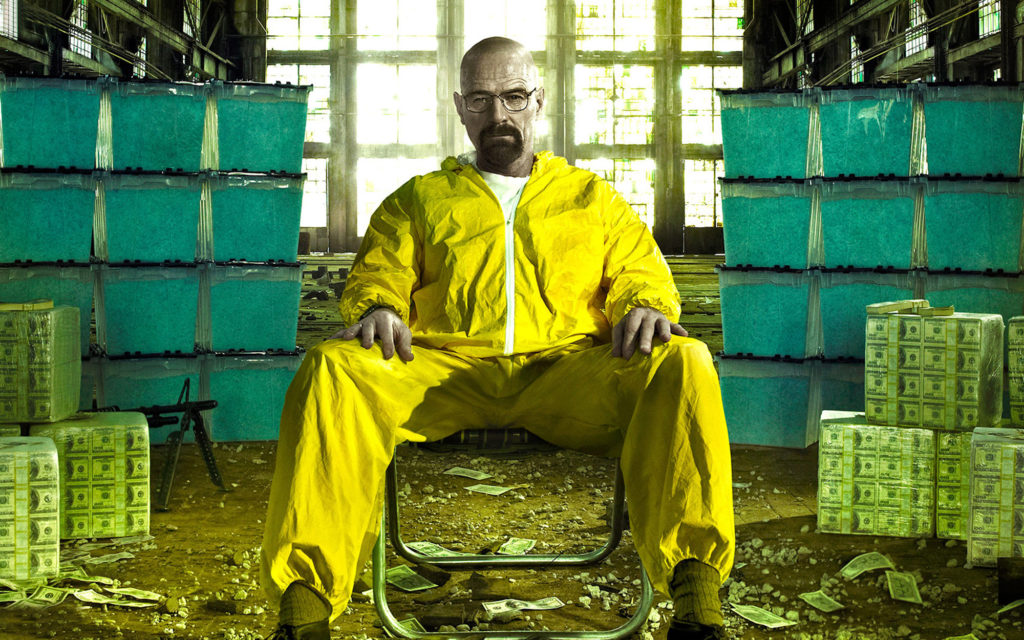
For their work on Breaking Bad, Barbanell and his colleagues received four Emmy nominations for Outstanding Sound Editing for a Series. When the show wrapped up its acclaimed run in 2013, his career continued as it had before, but he admitted to feeling a little let down. “I became emotionally attached to it,” he reflects.
Yet that sense of loss was lessened by an unexpected offer to join Gilligan’s follow-up/spin-off, Better Call Saul. Last summer, Barbanell and his crew provided Foley for season four and will continue this coming summer for season five. “Dominique was otherwise busy, so my talented partner from Universal, Alex Ulrich, and I are doing the Foley for Better Call Saul,” Barbanell comments. “We started watching, and they’re playing our stuff again, and it’s awesome.” In fact, it’s almost as rewarding as his experience on Breaking Bad.
“Breaking Bad is the pinnacle of my career,” he continues, in conclusion. “As a body of work, I don’t think I’ll ever be able to match it — before or since.”



